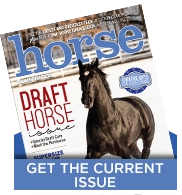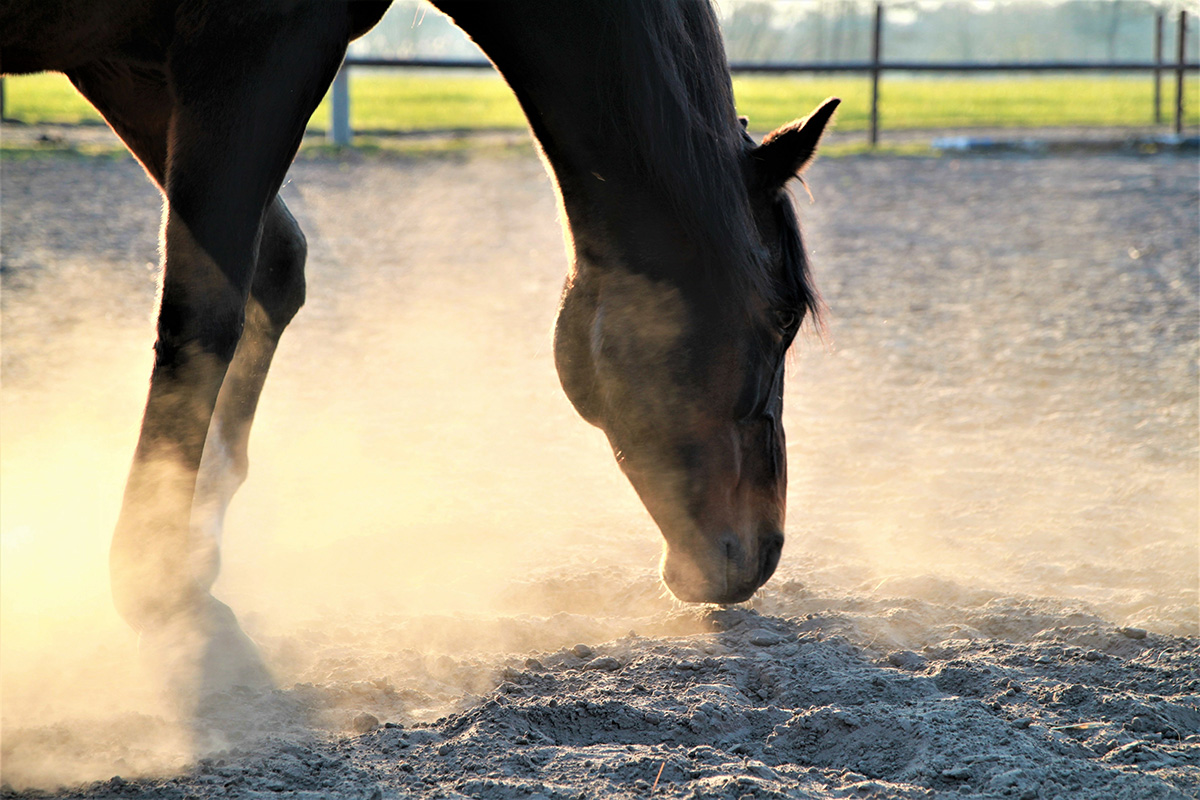
Some horses naturally pass ingested sand through their feces without any signs of discomfort. In other horses, the sand—which is heavier than grass or grain—sinks and accumulates in the large colon over time, leading to clinical signs of distress.
Though reported worldwide, a higher incidence of sand colic exists in parts of the United States, such as the desert Southwest, California, Florida, and Colorado.
Living in a dry environment isn’t the only source of sand ingestion, however. Grazing on dry lots or worn-down pastures, being fed forage on the ground, or trying to hunt out morsels of hay also present an opportunity for sand ingestion.
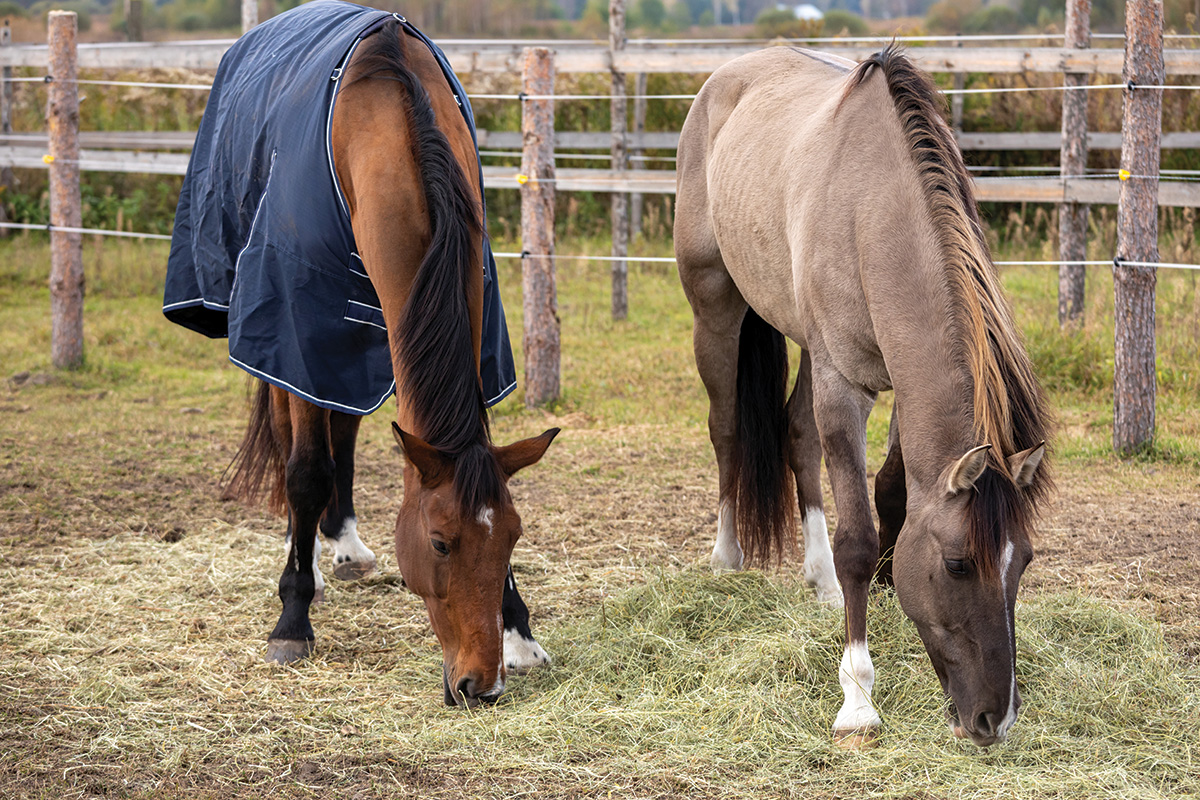
“Sand colic depends upon geographic location,” says Berkley Chesen, DVM, DACVS-LA, a veterinarian at Equine Comprehensive Wellness in Santa Fe, N.M. “Practicing in New Mexico, 10 to 20 percent of the colic cases I see have a sand component. In places where grass has been demolished and left bare, sand-covered ground, one might conclude that climate change has some effect on sand accumulation.”
Warning Signs of Sand Colic
While differences exist in geographical location, clinical signs of sand colic often mimic other forms of colic. A constant source of abdominal irritation, sand provokes a persistent inflammatory response and inevitably disrupts the bowel’s efficiency in absorbing nutrients.
When regular digestive movements are interrupted, signs such as watery diarrhea, unexplained or rapid weight loss, listlessness, loss of appetite, and evidence of sand in the stool serve as medical alerts. Increased heart and respiratory rates, sweating, pawing, and kicking at the abdomen are other signs of an impending colic episode.
Chesen notes that horses with frequent colic events, those that eat directly off the ground, and those that don’t receive enough hay in their diet are more likely to accumulate sand and experience abdominal pain.
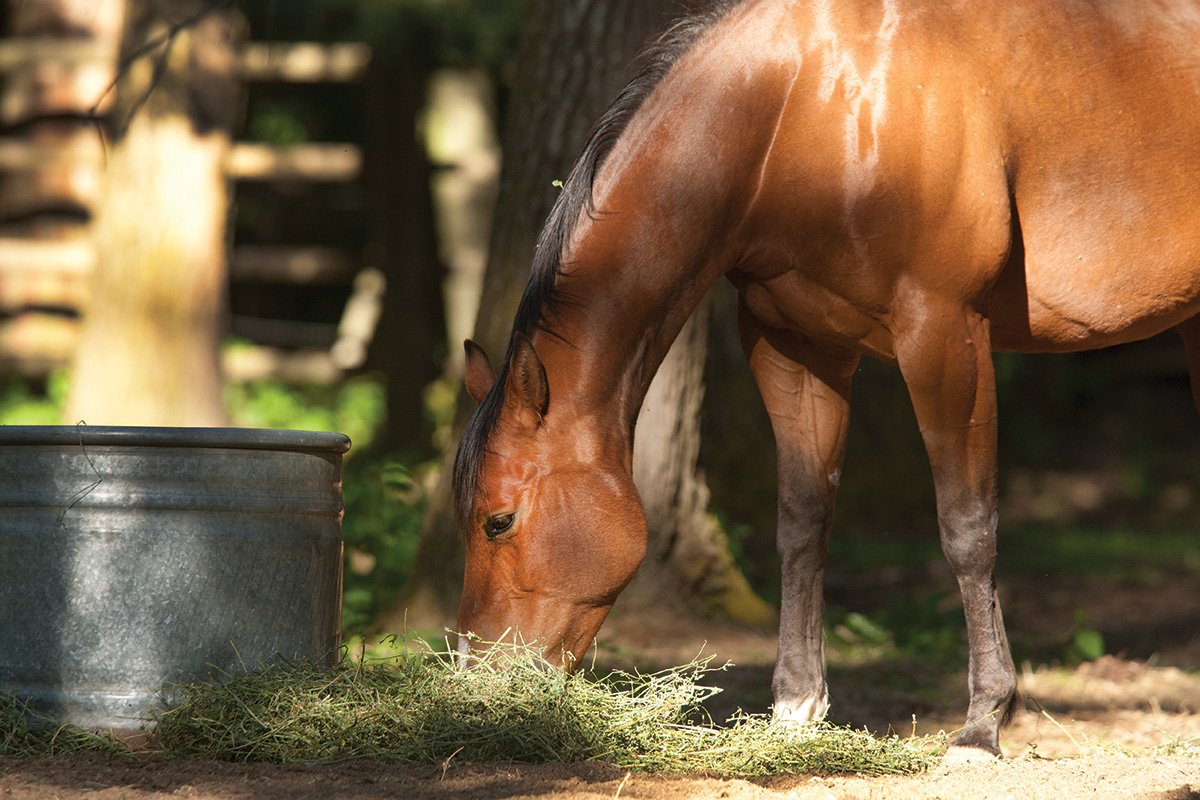
If left undiscovered, sand accumulation may lead to impaction of the obstructing material. Bowel displacement can also occur, and requires surgery.
Too much sand can accumulate or the material clumps up in one area and blocks the intestine, causing an obstruction, according to Julie E. Dechant, DVM, MS, Dipl. ACVS and ACVECC with Equine Surgical Emergency and Critical Care at the UC Davis School of Veterinary Medicine.
As the horse emits gas, the blockage hardens like cement, and the intestines become distended with gas.
“The sand is so densely packed, it’s basically an impaction,” says Dechant.
Volume alone isn’t the only factor, however.
“Sometimes we’ll have horses with huge amounts of sand that we can manage medically,” she continues. “Others have smaller amounts of sand, but it’s clumped in one area and causes a blockage. Accumulation of sand with gas will also trigger the horse’s intestine to displace.”
Diagnostic Tests
In the field, veterinarians use standard tests for detecting sand in a horse’s abdomen or intestinal tract, partly due to convenience, but more often because of a lack of access to imaging equipment.
Auscultation, or using a stethoscope to listen for sounds that mimic waves washing over a beach, assumes that a quantity large enough to produce audible feedback is present. Dechant observes that the test, while accessible in the field, presents screening challenges.
“Often in the field, we’ll put our stethoscope on the lower, ventral part of the abdomen to listen for sand,” she says. “The intestines have to be moving, so if there are active colic signs, sometimes those intestines stop moving. You might not hear sand, even if it’s there.”
Fecal segmentation, another test familiar to most horse owners, requires a rectal sleeve or plastic bag. Chesen confirms the commonality of the test, but cautions against its limits: Fecal sand tests are only accurate in confirming that sand is passing through with the manure.
“Floating manure in a Ziploc bag of water with the corner pointing down is another good way to see if sand is passing through the digestive system,” says Chesen. “[Sometimes] sand is auscultated in the abdomen, but no sand is present on a float test. This is because it’s just sitting idle in the colon and not moving.”
Radiographs (X-rays) are considered the gold standard for confirming the presence of sand in the gut and the amount accumulated. However, access often requires travel to a referral hospital and may be cost-prohibitive for the average horse owner, according to Dechant.
“Abdominal X-rays are reliable and pick up even tiny amounts of sand, but aren’t readily available, especially in the field,” she says. “Other tests are accessible, but they have their limitations.”
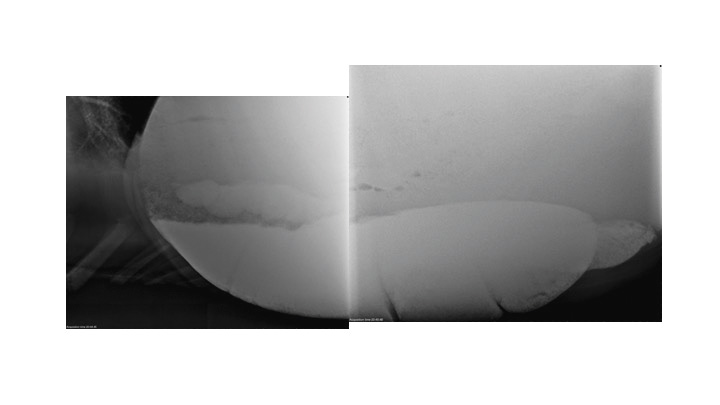
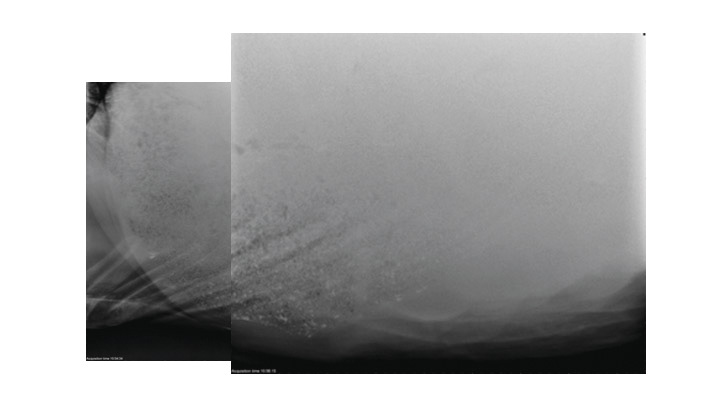
Conventional Treatments
Approaches for treating a horse to resolve sand ingestion traditionally entail passing a nasogastric tube through the nose to administer psyllium mixed with water to the stomach.
Psyllium, a natural laxative, forms a gel that breaks up sand particles, allowing passage through the digestive system. Fluids increase intestinal mobility and rehydrate the horse. Pain medication alleviates inflammation.
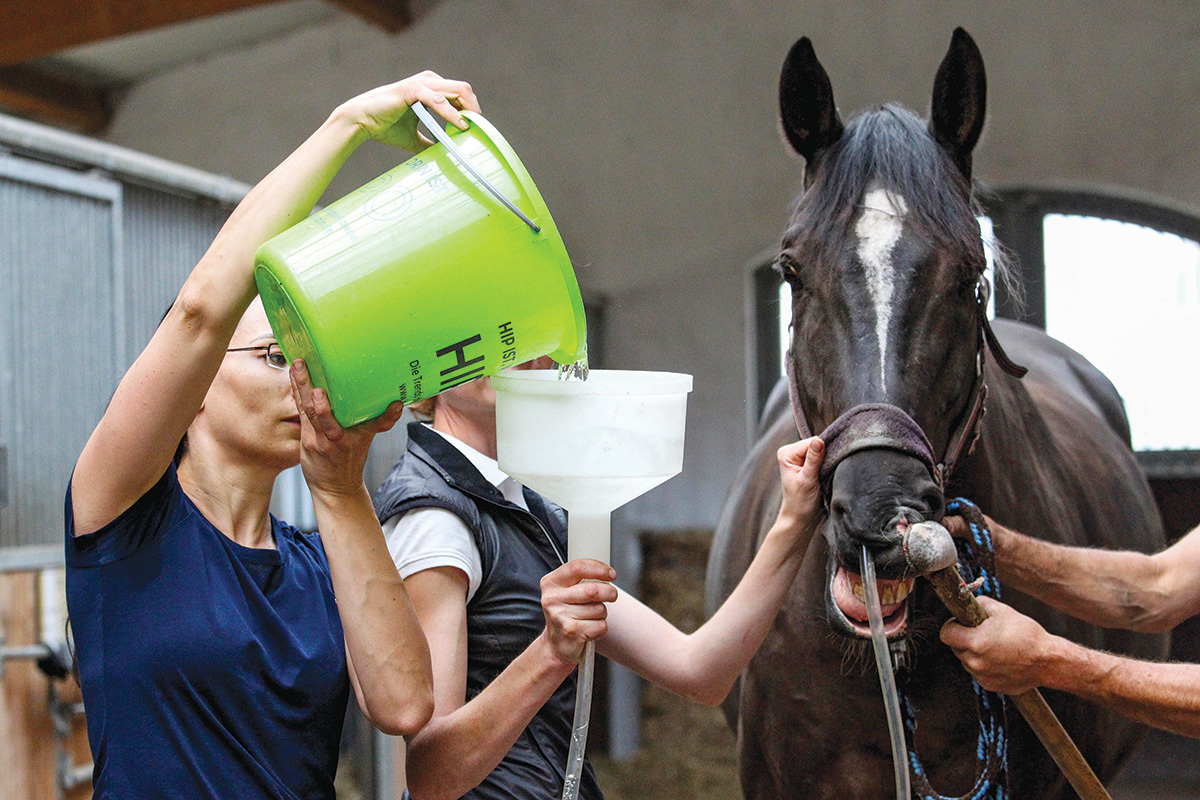
Chesen prefers mixing the insoluble fiber with mineral oil to ease psyllium administration.
“I mix psyllium with mineral oil rather than water because it’s easier to pump,” she says. “With water, the psyllium turns into a congealed mess.”
Psyllium isn’t without controversy, however. According to Dechant, psyllium’s efficacy in treating sand colic is debatable.
“Some people feel it works; some don’t, especially in the acute, crisis, and long-term phases,” she says. “There’s not 100 percent consensus if psyllium is always needed. I would say that historically, I didn’t use much psyllium. [But] I have been using it more recently, and I’ve been pleasantly surprised by the results.”
The American Association of Equine Practitioners recommends adding psyllium one week out of every month in the feed for horses prone to sand exposure.
Emerging Treatments for Sand Colic
A randomized controlled study out of Finland in 2018 examined 246 horses to determine whether combining psyllium with magnesium sulfate proved more effective in clearing sand than using either ingredient separately.
The investigation of the treatment with psyllium and magnesium sulfate concluded that 75 percent of horses resolved colonic sand accumulation after four days using the combined treatment.
Chesen confirms the approach and study results.
“Adding magnesium sulfate—Epsom salt—to any fluid pumped into the stomach is common with colics, as it pulls liquid into the gut and flushes the sand out,” she says.
Researchers Diana M. Hassel, Allen Landes, Julie Funk, and A.E. Hill evaluated whether a mixture of probiotics, prebiotics, and psyllium enhanced sand clearance more effectively. Four days of treatment demonstrated an increase in sand clearance in clinically normal horses and may be effective in preventing sand enteropathy and sand colic. The supplement also reduced the likelihood of inflammation caused by sand irritation.
Environmental Management
Examining where and how your horse eats is the best way to minimize the risk of sand ingestion. This may require a multi-faceted approach and a dose of creativity.
Preventing a logjam of sand in the gut begins with halting its ingestion. Limiting access to sandy turnouts or feeding on rubber mats manages the amount of sand ingested.
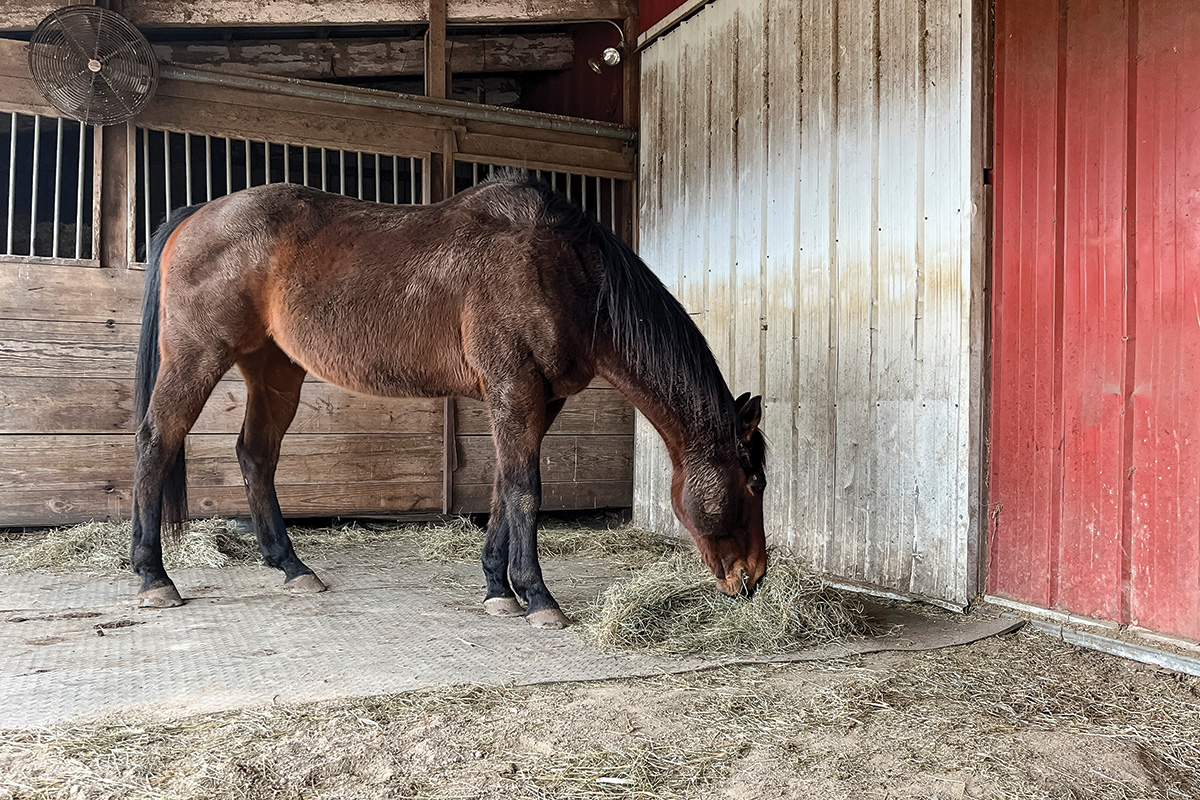
Slow feeders reduce waste and provide a steady flow of forage, and access to forage around the clock helps the digestive tract remove buildup of sand or gravel.
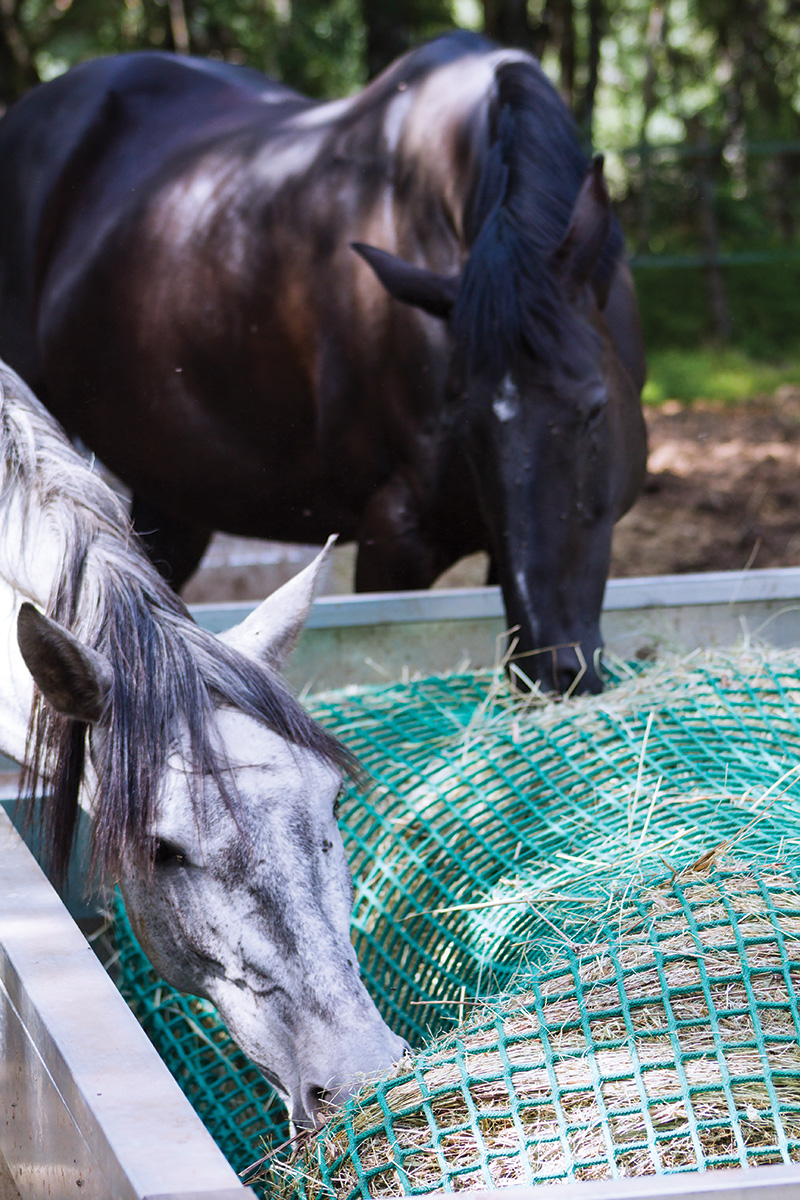
Slow feeders with slotted tops help block a horse from pulling hay onto the ground, according to Chesen. Feeding in high-sided tubs and checking feces for sand are tactics all horse owners can take.
“Psyllium is easy, and that’s why it’s appealing,” says Dechant. “[But] environmental management is the tough part.”
This article about sand colic appeared in the June 2023 issue of Horse Illustrated magazine. Click here to subscribe!
These Horse Care Tips are presented by CareCredit.






